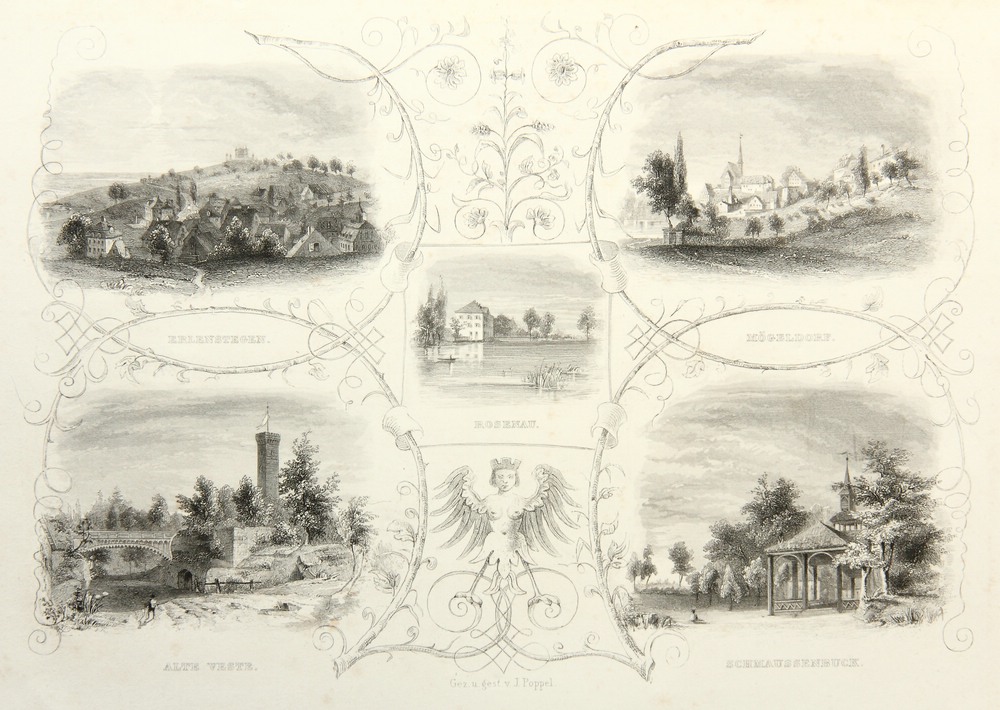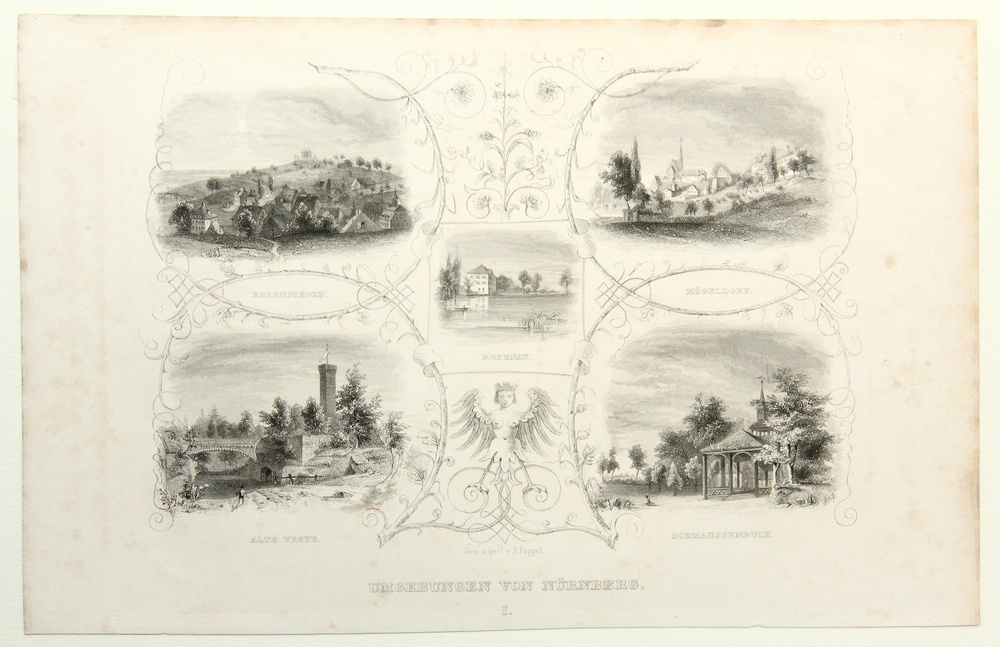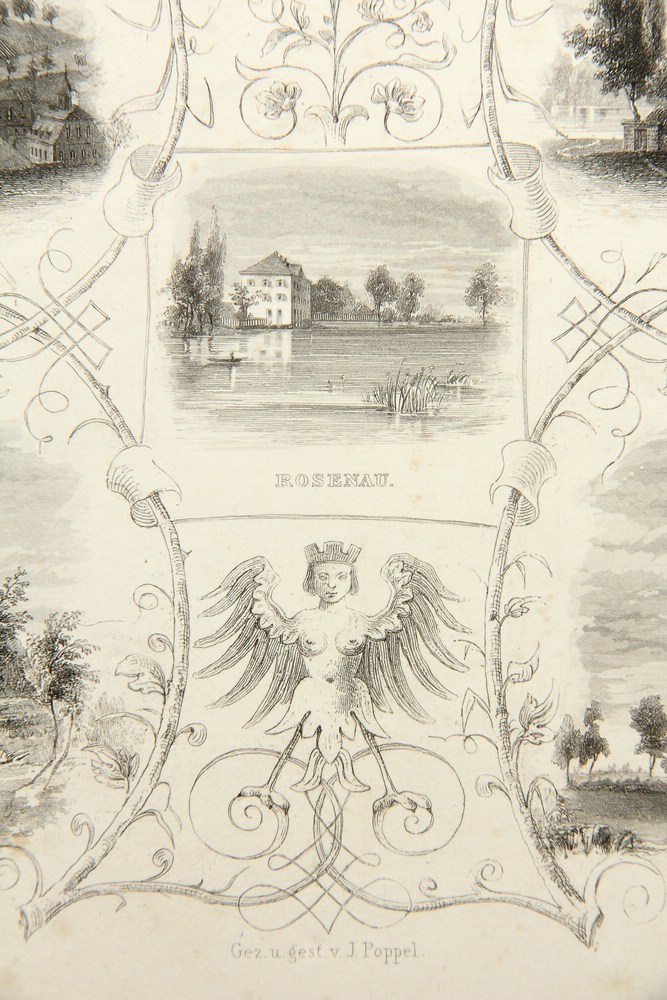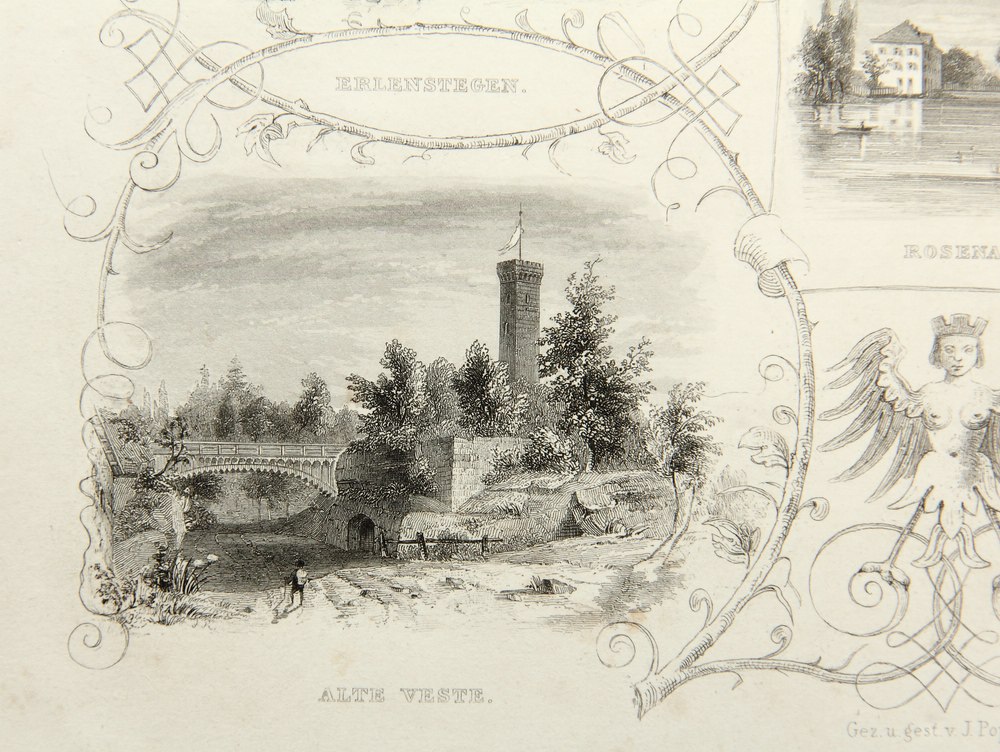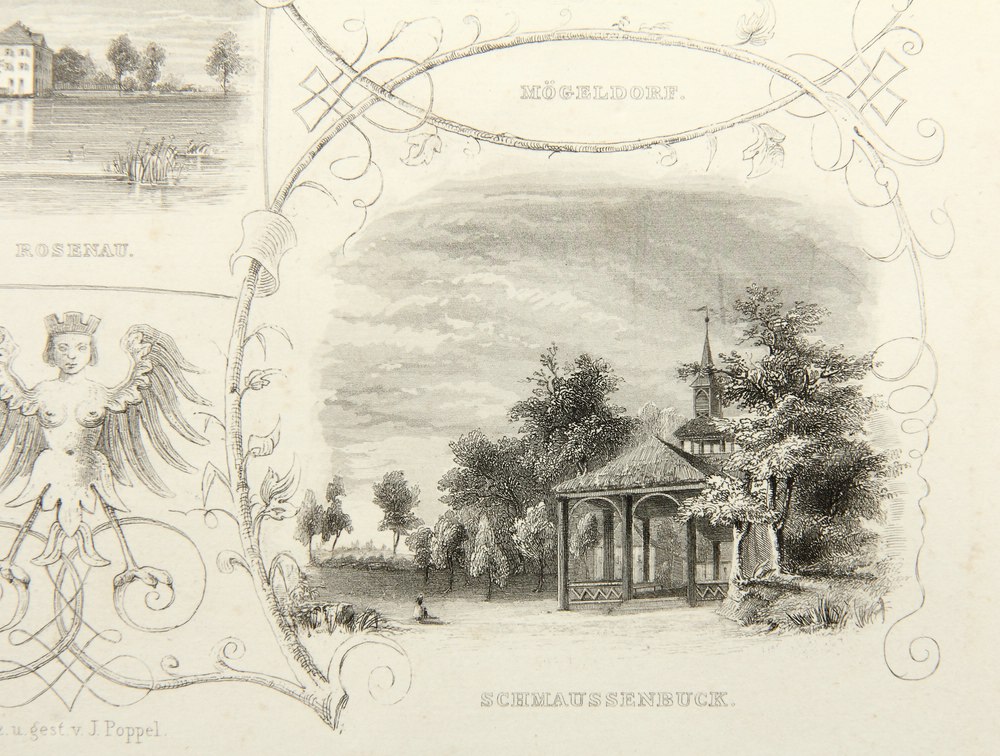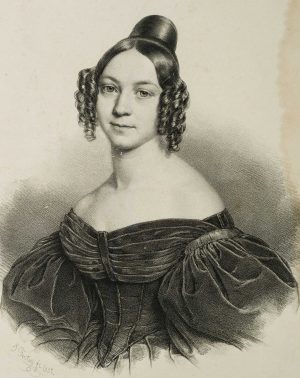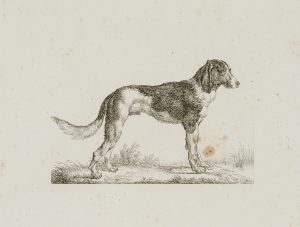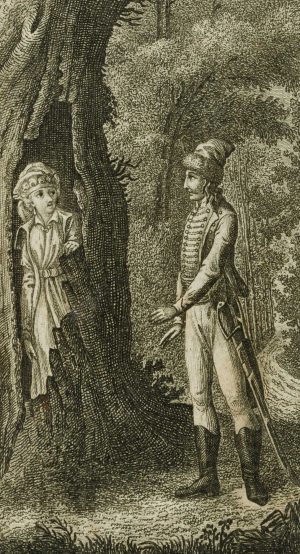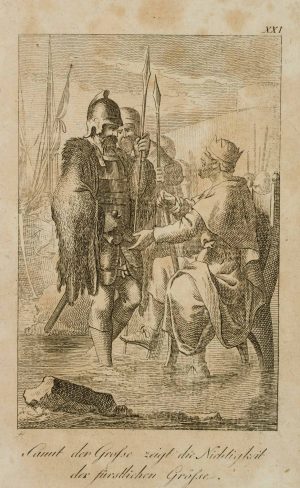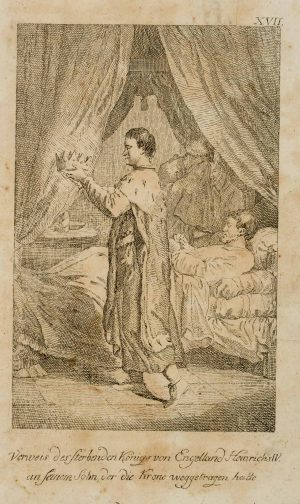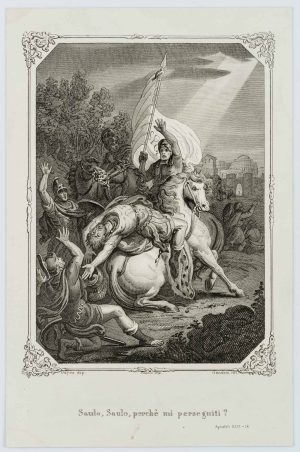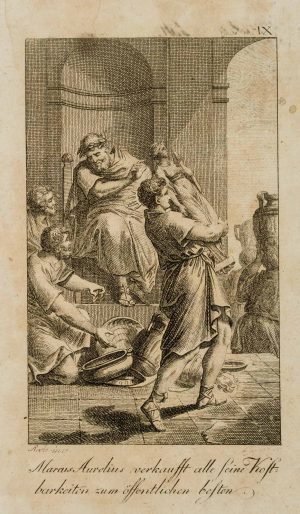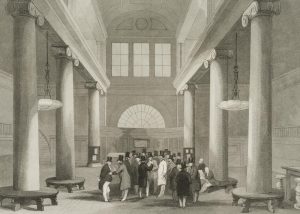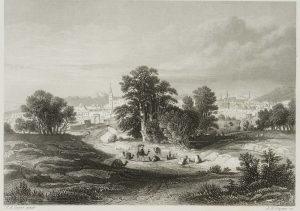Johann Gabriel Friedrich Poppel (1807 Hammer – 1882 Ammerland), Landschaft und Orte in der Umgebung von Nürnberg, 19. Jahrhundert, Stahlstich
- Technik: Stahlstich auf Papier
- Bezeichnung: Unterhalb der Darstellungen jeweils in der Druckplatte betitelt. Darunter mittig vom Künstler signiert und mit “Umgebung von Nürnberg. I.” bezeichnet.
- Datierung: 19. Jahrhundert
- Beschreibung: Collagenartige Darstellung kleiner Orte und Landschaften rund um Nürnberg gerahmt von Zweigen und floralem Ornament. Dargestellt sind die Ortschaften Erlenstegen, Mögeldorf, Rosenau, die Alte Veste oder Burg Berch bei Zirndorf, Schmaussenbuck und Rosenau.
- Schlagworte: Architektur, Deutschland, Romantik, 1800-1849
- Größe: 15,1 cm x 23,3 cm, Darstellung: 11,5 cm x 17,5 cm
- Zustand: Guter Zustand. Auf dem gesamten Blatt sind blasse Stockflecken erkennbar. Um die Darstellung herum sind schwache Spuren einer Rahmung erkennbar. In den Blattecken sind kleine Einstiche einer ehemaligen Befestigung zu erkennen. Im linken oberen Blattviertel sind punktförmige Druckstellen im Papier sichtbar. Die Blattkanten sind stellenweise geringfügig bestoßen.
English Version:
Johann Gabriel Friedrich Poppel (1807 Hammer – 1882 Ammerland), Landscape and places around Nuremberg, 19th century, Steel engraving
- Technique: Steel engraving on Paper
- Inscription: Titled in the printing plate below the depictions. Below centrally signed by the artist and inscribed “Umgebung von Nürnberg. I.” in the centre.
- Date: 19th century
- Description: Collage-like depiction of small towns and landscapes around Nuremberg framed by branches and floral ornamentation. Depicted are the villages of Erlenstegen, Mögeldorf, Rosenau, the Alte Veste or Burg Berch near Zirndorf, Schmaussenbuck and Rosenau.
- Keywords: 19th century, Romanticism, Architecture, Germany,
- Size: 15,1 cm x 23,3 cm (5,9 x 9,2 in), Depiction: 11,5 cm x 17,5 cm (4,5 x 6,9 in)
- Condition: Good condition. Pale foxing is visible on the entire sheet. Faint traces of framing are visible around the image. Small punctures of a former mounting are visible in the corners of the sheet. Punctiform pressure marks are visible in the upper left quarter of the sheet. The edges are slightly bumped in places.

